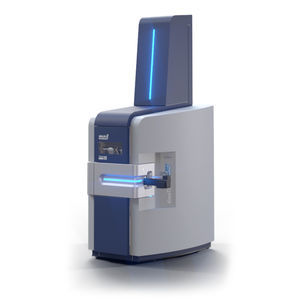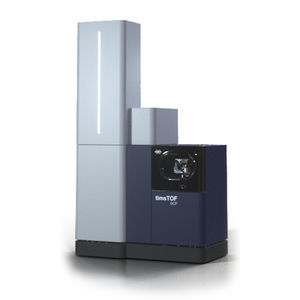
- Laboratory
- Physico-chemical analysis
- Visible spectrometer
- Bruker Daltonics Inc.
Visible spectrometer timsTOF fleX MALDI-2transferMALDIbenchtop

Add to favorites
Compare this product
Characteristics
- Type
- visible
- Applications
- transfer
- Technology
- MALDI
- Configuration
- benchtop
Description
MALDI-2 increases sensitivity by up to 1-3 orders of magnitude depending on sample, analyte and matrix.
Dimensionality
MALDI-2 ionizes a wider range of chemical classes by reducing ion suppression effects, expanding chemical range for targeted analytes in MALDI Imaging.
A second laser is available for post-ionization
The overall low ion yield and sensitivity issues due to ion suppression, using traditional MALDI, make the imaging analysis of samples sometimes very challenging. Our answer to these problems is MALDI-2. The post-ionization technique reduces ion suppression effects and improves sensitivity by orders of magnitude.
After the initial MALDI process, a second laser, sitting parallel to the sample surface, fires into the evolving plume and post-ionizes neutral (mainly matrix) molecules. A charge transfer from post-ionized matrix molecules to neutral analyte molecules leads to an amazing sensitivity gain for many analytes.
MALDI-2 and microGRID - A powerful combination making the possibility of sub-cellular imaging within reach
The need for uncompromising post-ionization has never been greater. High spatial resolution below 10 µm results in a drastically decrease of ablated and ionized sample material. MALDI-2 post-ionization compensates the lower sample amount per pixel, making even the finest molecular distributions visible.
Combining MALDI-2 post-ionization with microGRID enabled high spatial resolution opens the field for the analysis of the smallest unit of eukaryotic life - single cells. This unique combination makes the timsTOF fleX MALDI-2 the platform of choice for out of the box single cell imaging.
VIDEO
Catalogs
No catalogs are available for this product.
See all of Bruker Daltonics Inc.‘s catalogsOther Bruker Daltonics Inc. products
Trapped Ion Mobility Spectrometry (TIMS)
Related Searches
- Analysis software
- Viewer software
- Control software
- Laboratory software
- Reporting software
- Spectroscope
- Monitoring software
- Acquisition software
- Benchtop spectroscope
- Chromatograph
- Import software
- Simulation software
- Server software
- Test software
- Research software
- Interpretation software
- MS spectrometer
- Compact spectrometer
- Spectrometer for the pharmaceutical industry
- Research spectroscope
*Prices are pre-tax. They exclude delivery charges and customs duties and do not include additional charges for installation or activation options. Prices are indicative only and may vary by country, with changes to the cost of raw materials and exchange rates.







